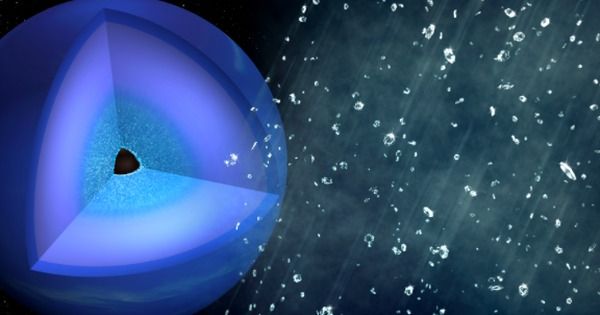The first time and only time I’ve been to the United States was when I carried out a summer placement at the SLAC National Accelerator Laboratory. To get there, I had to have an interview at the U.S. embassy, where when asked what I was going to do in the U.S. I said that I’d be making diamonds. My interviewer laughed at me. But it was true, that was the experiment I was going to help out with. And now, a research collaboration of scientists from all over the world have, for the first time, created “diamond rain” in the laboratory to mimic the conditions of the interiors of icy giant planets. Dominik Kraus, scientist at Helmholtz Zentrum Dresden-Rossendorf, described this work as “one of the best moments of my scientific career.”
Icy giant planets like Neptune and Uranus in our solar system, are planets with a gaseous atmosphere and a rocky core surrounded by a dense slush of different ices. The ices are generally hydrocarbons made of heavier elements including oxygen, carbon, sulfur and nitrogen bonded to hydrogen. Under extremely high pressures, diamond rain can be seen deep inside their interiors. This occurs when the hydrogen and carbon are squeezed by extreme pressures to form solid diamonds. They then slowly sink towards the center of the icy giant forming a layer around the rocky core, just like rain sinks in our atmosphere towards the surface of Earth.
